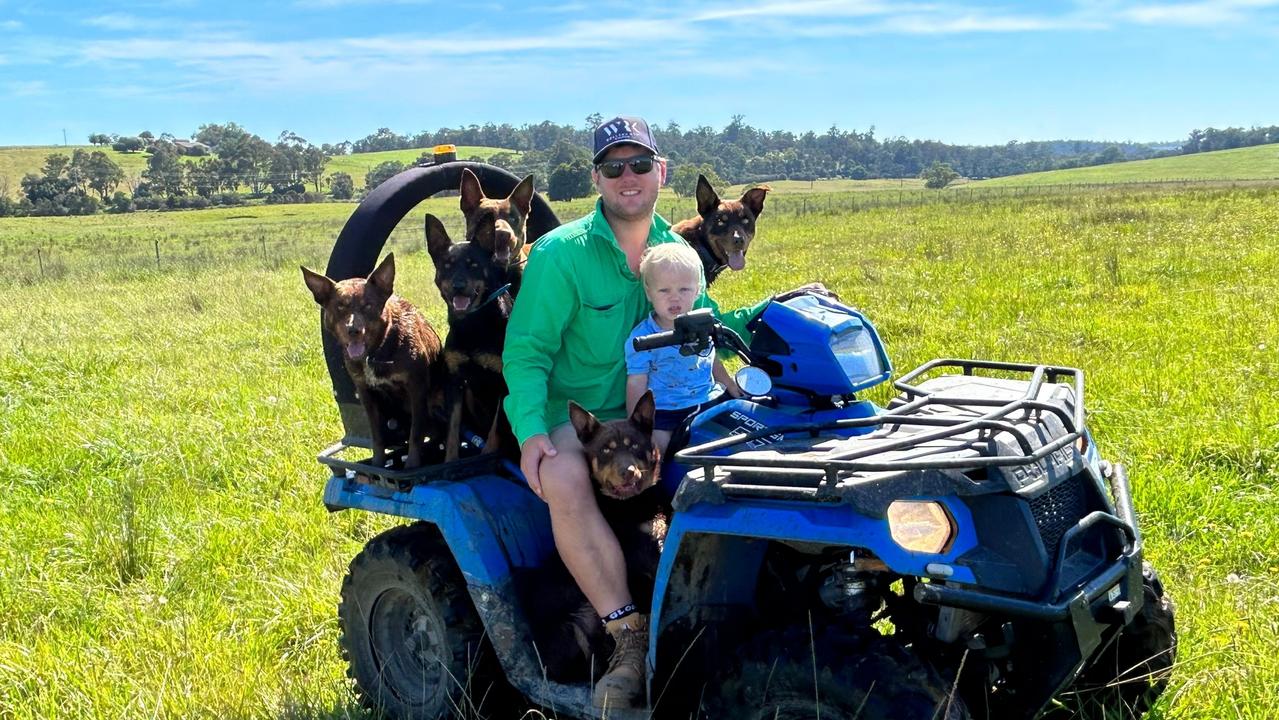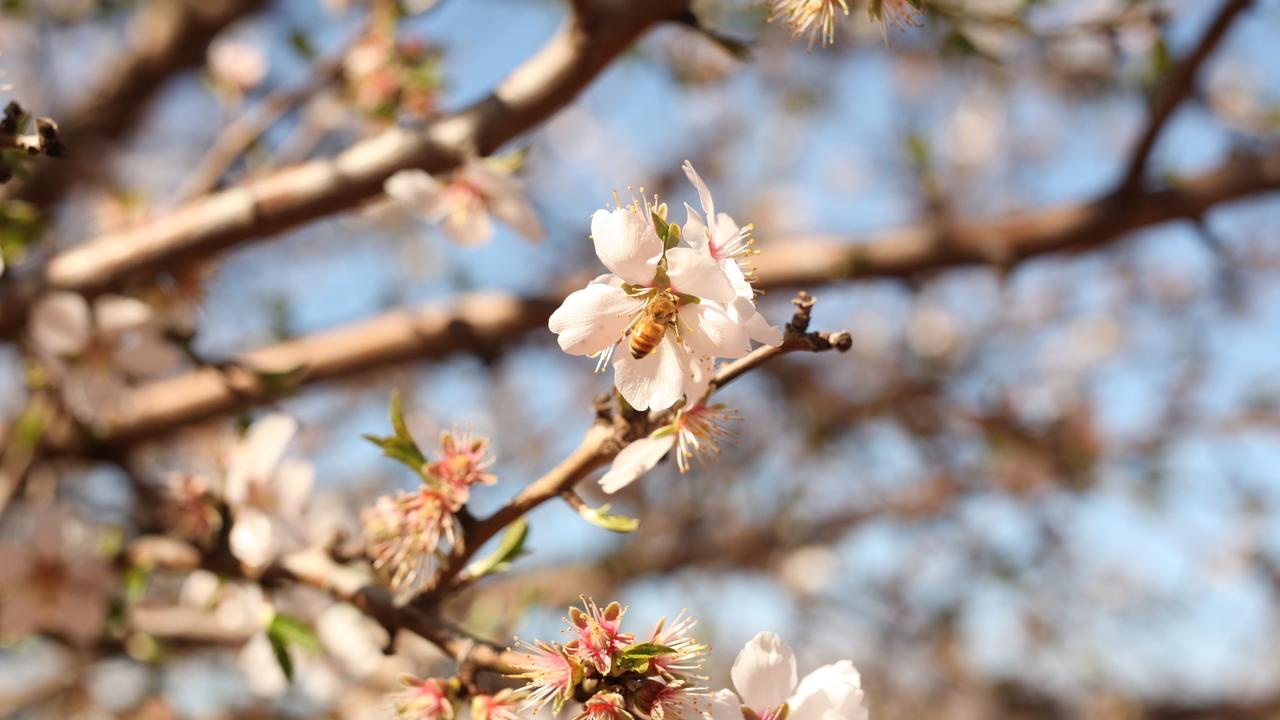High stocking rate paying off at Dryburgh, Neerim Junction
Ben Whiteley has turned this former run down hobby farm into a showstopping, productive property running 760 Angus cattle at Neerim Junction. See how he did it.
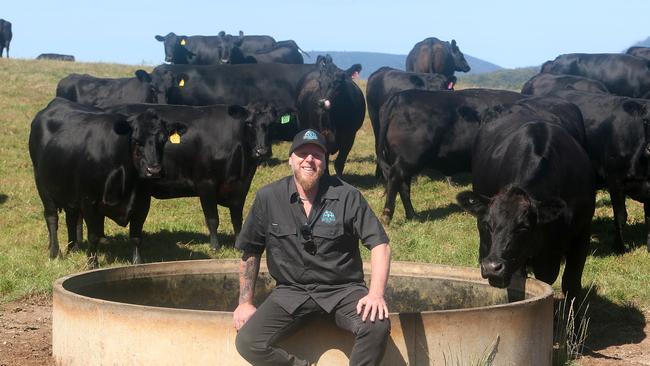
Ben Whiteley is a dairy farmer turned beef farmer.
And while circumstances meant the transition probably wasn’t his first choice, he has turned a run down 113ha property into a productive, showstopping 324ha property.
Ben has been managing Dryburgh at Neerim Junction for Simon and Anna Purcell for the past seven years, turning the once run down, hobby farm with just 27 cattle into a highly stocked and productive property running 760 Angus cattle.
Previously Ben was a dairy farmer, milking 1000 cows on leased land and share farming. They lost everything in the Black Saturday bushfires, then after rebuilding got hit with seven years of drought and poor milk prices.
“It absolutely broke our hearts to sell up. We started from nothing and had all the forecast programs and it was grim even though we were in the top 5 per cent of dairy farmers,” he said.
And there were more curveballs for Ben, from being diagnosed with cancer, to his 30-year marriage break-up, but he’s rebuilt himself along with the Purcells property and now “has the best job in the world”.
“When I first landed the job with Simon and Anna they didn’t know if they wanted a farm manager or what they wanted. The 280 acres (113ha) was old and run down but they wanted to produce a showpiece property, so I asked permission to start from scratch,” he said.
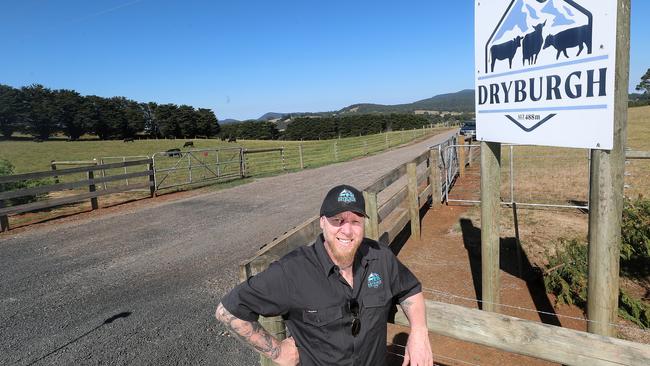
SET TO WORK
Ben then set to work and gutted the whole farm, pulling out fences and sheds and started again.
“I run a tight ship, Simon doesn’t like cutting corners, but they trusted me.”
The rebuild started with GPS mapping the property, then installing a water system with 63mm high pressure poly throughout the whole place. Then came new fences and laneways.
The paddocks are all about 4ha, with a water trough in the middle, which works out to about 79 paddocks.
“Another 220 acres (89ha) came up for sale next door and they purchased it, and then they’ve added another 150 acres (60ha) and another.”
In total the property has grown to 324ha, located about one hour from Melbourne at the base of Mt Baw Baw with an average annual rainfall of 1200mm.
Turning the property into a productive farm was next.
Ben said they had 27 Speckle Park cattle to start with, which he started doing his own experimenting with.
“I was used to highly stocked dairy farms and had two dairy cows I bought with me and ran them with the Speckle Parks,” he said.
“I noticed my calves were twice the size of the beef calves. Naturally the dairy cows just have more milk, so the calves were bigger, so that was one factor.”
“Even though we are beef farmers, the cattle are still producing milk but for production. That’s when I realised I could utilise every blade of grass and run beef cattle like I did dairy cows.”
So now Ben said they had a high stocking rate of 760 cattle on 324ha, which is 17 dry sheep equivalents/ha.
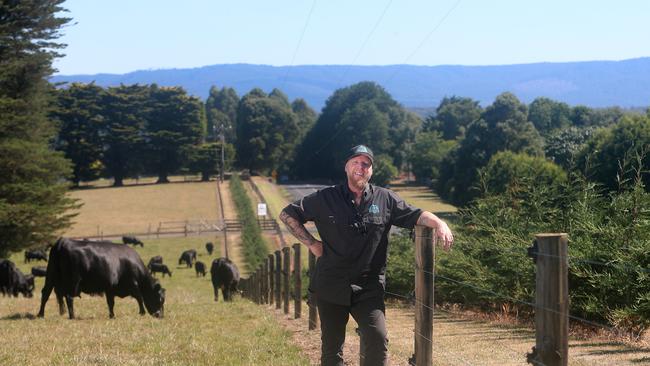
BREED CHANGE
Ben said he wasn’t convinced by the Speckle Park cattle and started purchasing some Angus.
“The Speckle Parks are beautiful animals but I had a gut feeling, all everyone was looking at was Angus, and it’s on every menu and in McDonalds, that wasn’t the case for Speckle Parks.”
They started building up numbers and had two-thirds Angus and one-third Speckle Park which were all run as one mob.
“I started measuring weight gain and they were putting on exactly the same weight and were the same medium-framed animal, the Speckle Park were probably better eating as they have a bit more natural marbling, but whenever we were selling them, buyers weren’t interested in them,” Ben said.
He then separated the Angus and Speckle Park herds, and then two years ago they ultimately decided to sell the Speckle Park cattle and stick with Angus for the better marketing advantage.
From the start they have been using Bowman Angus, from Neerim South, genetics.
“The proof is in the pudding. Last year we calved 420 cows and had not one calving problem.”
We started off buying bulls to a budget and were looking for low birth weight and easy calving.
Now Ben said they were becoming more serious with the breeding and genetics side of the business, so were also using Estimated Breeding Values more seriously and also want bulls that have high milk and fertility.
He has also recently separated a nucleus of 40 heifers to start the Dryburgh Angus stud to invest more into the “genetics side”.
The 40 heifers were selected purely on weight and they were now also performance recording the herd.
“We have just registered the stud and we will get to the point where we can sell our own bulls,” he said.
GRAZING CONTROL
The high stocking rate means the feed needs to be managed carefully, something Ben did confidently with dairy cattle.
“I tried feeding cattle on straight silage for an experiment but realised when you change their diet like that, it doesn’t change their weight.”
Ben uses a controlled grazing method, with the paddocks split into 4ha.
Generally he said 330 lactating cows and calves grazed on a paddock for two days in spring and were then moved. The time a paddock was grazed is dependent on the time of year.
“I calculate the kilograms of dry matter and then make decisions on grazing timing from there. I manage the grass the way I would a dairy farm.”
This also means topping pastures – mowing the pasture three to four times after the cows have eaten it.
“We think it really benefits the pasture. Especially during summer when the plant goes into reproductive mode, it means we cut the seed heads off and we are controlling the quality of the grass.”
This then increases pasture utilisation by the cattle and then in turn production.
“We get a response straight away after topping, usually we have new growth within 10 days.”
“We do everything we can to prepare for the autumn break, we want to grow as much grass as possible to set us up for winter.”
The system is all pasture based, with banquet, matrix and red clover varieties throughout the property.
“We basically have kept the pastures as they were, but managed them by spraying out broadleaf and then we do two dressings of fertiliser, one pre spring and one in autumn.”
“I don’t want to upset the subsoil and have discovered less is more.”
To ensure they can get through winter, Ben said they gather all the fodder they can and have four bulk silage pits.
“Running 700 cows at certain times of the year, it is much easier to grab bulk silage.”
To make feeding easier Ben has scales on the feed wagon to work out the tonnage.
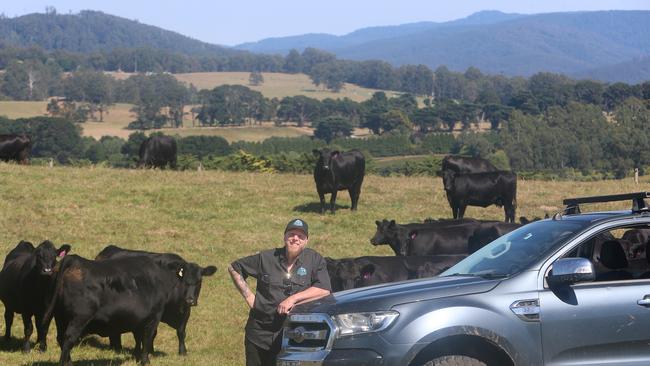
SPRING FED
Joining is late October, with the herd spring calving starting on August 1.
They join for seven weeks, but plan to bring it back to a six week joining by next year.
“The way we manage the pastures means when cows are in lactation we have plenty of grass, we are trying to utilise that natural peak of cows and calves.”
Calves are then sold as weaners at 10-12 months old, mostly through the saleyards.
“It doesn’t make sense to keep them any longer.”
Ben said they sold 120 steers in August 2024 and they averaged 415c/kg, topping the market that day.
They calves are yard weaned at about 10-months-old.
All cows are pregnancy tested about five to six weeks after the bulls are taken out so they can get an accurate calving date.
Any cows that aren’t in calf are sold, although for the first five years they kept all cows as they were building up numbers.
Fertility is one aspect Ben has been focused on, with a 5 per cent empty rate.
“We keep it simple. There is a reason cows get in calf by a bull.”
For ease of management Ben uses the AgriWebb livestock management software for traceability and cattle grazing management as well as IntelliWeb for water tank levels.
Ben also works with Jeff Urie of Ag-Challenge, an agricultural consultancy business.
“Using a consultant is paramount for a number of reasons, as a manager you have to make daily management decisions and the consultant comes every couple of months to keep you on track,” he said.
“Consultants are at different farms daily and if you’re complacent and not looking over the fence or asking questions you can find yourself in all sorts of trouble, especially being so highly stocked.”




